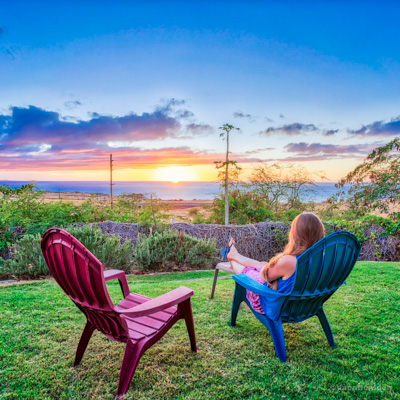Midwest Weekend Getaways

The Midwest is full of charm, natural beauty, and vibrant cities, making it a perfect region for weekend getaways. Having explored it on many occasions, I’ve found that the Midwest offers everything from peaceful lake retreats and scenic small towns to bustling cities filled with culture, history, and great food.
I’ve discovered cozy waterfront escapes, trails that wind through rolling hills, and lively downtowns perfect for exploring over a couple of days. From romantic getaways to family adventures and outdoor fun, the Midwest has no shortage of memorable weekend destinations. Here are the ones I recommend, and I think you’ll enjoy them too.
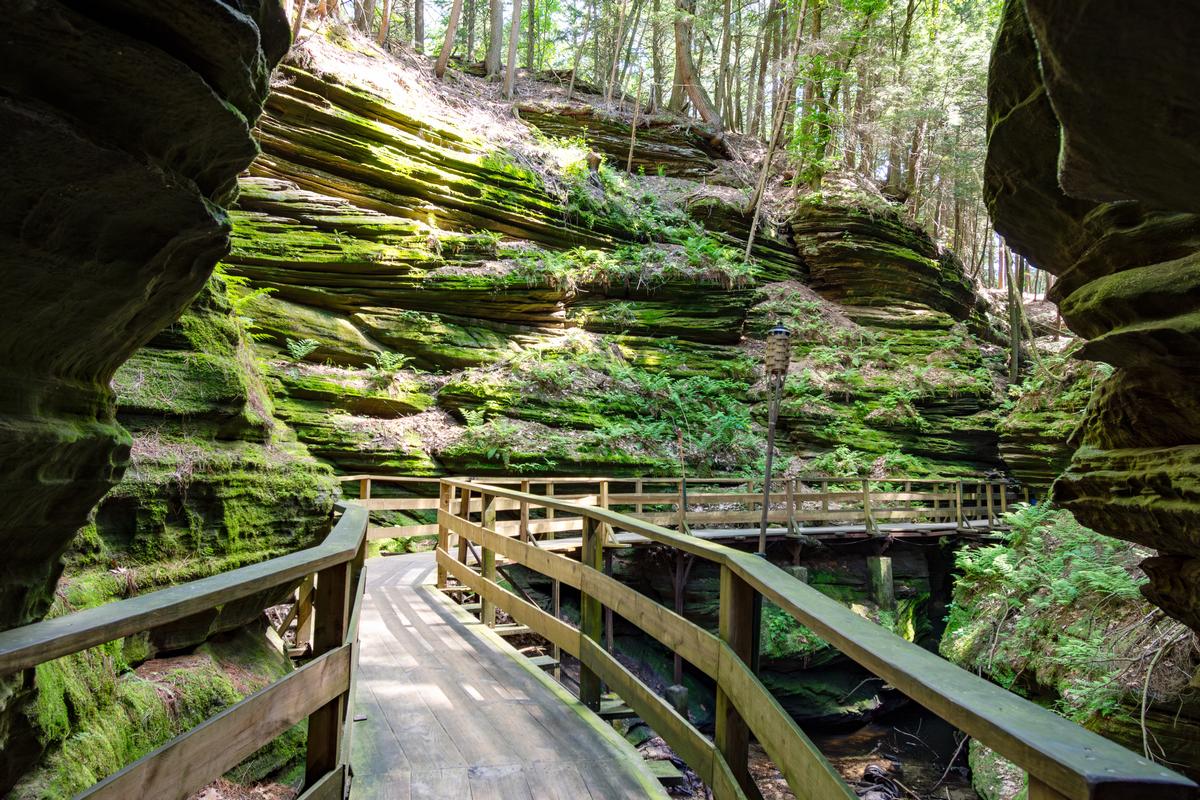
1. The Wisconsin Dells
When I think about a quick Midwest escape, the Wisconsin Dells always comes to mind. Just a few hours from both Milwaukee and Chicago, it feels close enough for convenience yet far enough to feel like a real break.
We spent a weekend surrounded by rolling hills, sandstone bluffs, and the scenic Wisconsin River, and it quickly became one of my favorite Midwest getaways that completely won me over. The area is famous for its waterparks, but there’s so much more to discover once you step outside the slides and pools.
One afternoon, I hopped on a river boat tour and couldn’t get enough of the dramatic cliffs and unusual rock formations. Each curve of the river revealed something new, and it made me feel like I was exploring a hidden corner of the state.
We also ventured into Devil’s Lake State Park, where we hiked trails that opened up to panoramic views that were nothing short of spectacular. The fresh air, sparkling lake, and endless trails gave us that refreshing reset we were hoping for.
Another underrated gem is exploring the downtown area, where cool shops, interesting attractions, and the historic Wilcox Theater add so much character to the city. I think it’s one of the most exciting spots to walk around, and catching a show at the Wilcox is a unique and memorable experience that feels like stepping into local history.
Whether you’re craving family-friendly fun at the waterparks or a more relaxed connection with nature, the Dells truly offers both. For us, it was the perfect Midwest getaway that blended adventure, charm, and relaxation all in one spot.
Check prices at Hilton Garden Inn Wisconsin Dells.
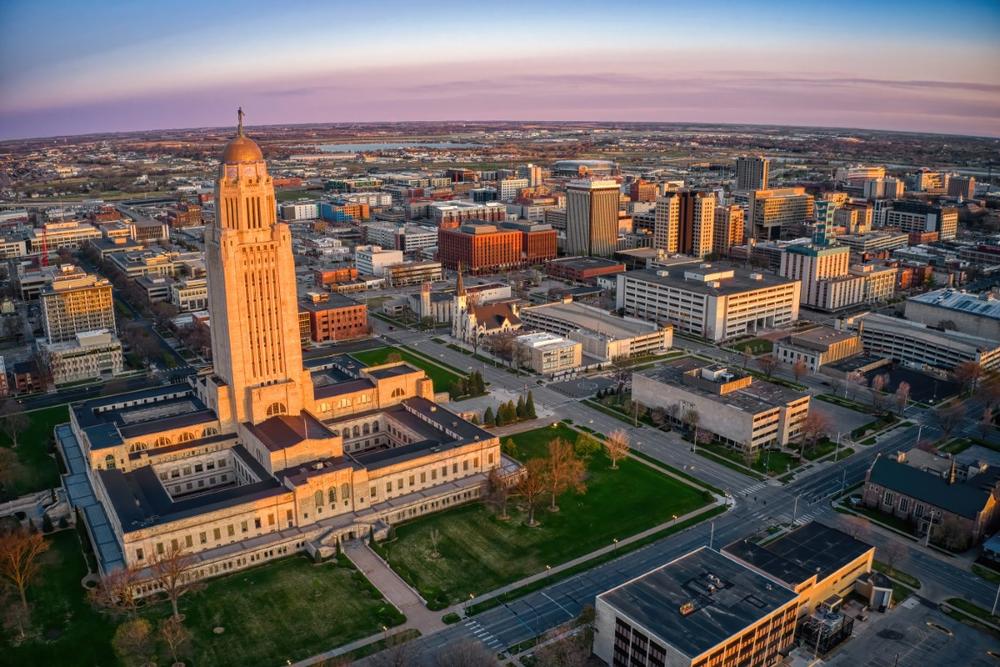
2. Lincoln, Nebraska
When I planned a Midwest getaway, I didn’t expect Lincoln, Nebraska, to surprise me as much as it did. Just an hour from Omaha, it’s easy to reach yet it feels like its own world with a vibrant mix of college-town energy and cultural charm.
We started in the historic Haymarket District, where old brick warehouses have been transformed into cool restaurants, coffee shops, and boutiques. I loved wandering the streets, soaking in the lively vibe, and finding a hidden café for an afternoon pick-me-up.
The Nebraska State Capitol was next on our list, and I have to admit, it’s one of the most unique buildings I’ve ever visited. The art deco design, mosaics, and murals made it feel both monumental and inspiring, and the observation deck offered spectacular views over the city and surrounding plains.
We also carved out time for the University of Nebraska campus. I enjoyed strolling through the leafy walkways, and the Sheldon Museum of Art really stood out with its mix of modern and classic pieces. It felt like an unexpected gem tucked right into the city.
Later, we slowed down with a walk through the Sunken Gardens. The flowers, fountains, and quiet paths gave us a joyful break from the bustle of downtown. It was a moment of calm that made the trip feel complete.
For me, Lincoln was more than just a stop in Nebraska—it was a weekend filled with history, art, and relaxation. It’s the kind of Midwest getaway that balances culture, nature, and small-city charm in the best way.
Check prices at Graduate Lincoln.
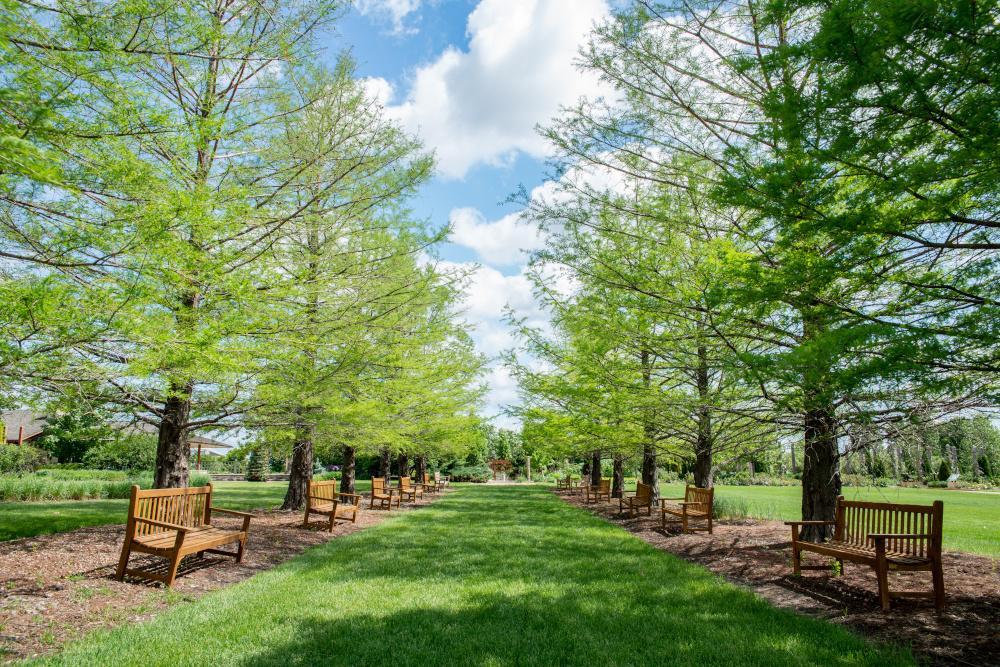
3. Ames, Iowa
When I made my way to Ames, Iowa, I found myself instantly drawn to its friendly, college-town spirit. Just about half an hour north of Des Moines, it’s close enough for a quick weekend escape yet filled with enough character to feel like its own destination.
We began at Iowa State University, which truly sets the tone for the city. I loved walking through the leafy campus, stopping by the Memorial Union, and admiring the famous campanile that stands as a symbol of Ames. The blend of history and student energy gave the whole area a joyful vibe.
One of my favorite spots was Reiman Gardens, a spectacular 17-acre botanical garden right next to Jack Trice Stadium. The Butterfly Wing felt like stepping into a dream, with colorful wings fluttering around us as we explored exotic plants and flowers.
Downtown Ames offered us plenty of charm too. We browsed local shops, grabbed coffee in a cozy café, and ended the evening with a hearty meal at one of the city’s farm-to-table restaurants. It was the kind of hidden Midwest gem that makes a trip feel special without being overwhelming.
We also carved out time for a walk along Ada Hayden Heritage Park, where trails wind around the water and open prairies. The peaceful landscape made it the perfect contrast to the buzz of the university scene.
For me, Ames struck that balance between culture, nature, and community warmth. It’s an underrated getaway that left us refreshed, connected, and eager to return.

4. Cedar Falls, Iowa
When I headed to Cedar Falls, Iowa, I didn’t expect it to feel like such a cool mix of small-town charm and outdoor adventure. About an hour and a half from Des Moines, it makes for an easy Midwest weekend trip that still feels refreshing and new.
We started downtown, where historic brick buildings now hold cafés, boutiques, and restaurants. I loved strolling through Main Street, discovering unique shops, and pausing for a coffee at a hidden spot that instantly became one of my favorite finds of the trip.
The real highlight, though, was the access to nature. Cedar Falls is right next to an incredible trail system, and we rented bikes to explore stretches of the Cedar Valley Trails. It was joyful to ride along the river, passing through wooded areas and open fields, with the scenery constantly shifting.
We also wandered through the University of Northern Iowa campus, which brought a lively energy to the city. The Gallagher Bluedorn Performing Arts Center had an exciting lineup, and even just walking through the grounds gave us a sense of the community’s pride.
Later, we spent a quiet afternoon at Big Woods Lake Recreation Area. The calm water, picnic spots, and easy hiking trails made it the perfect way to unwind and soak in the outdoors.
For me, Cedar Falls blended relaxation and activity in the best way. It’s an underrated Iowa getaway that offers both a welcoming downtown and spectacular natural escapes just steps away.
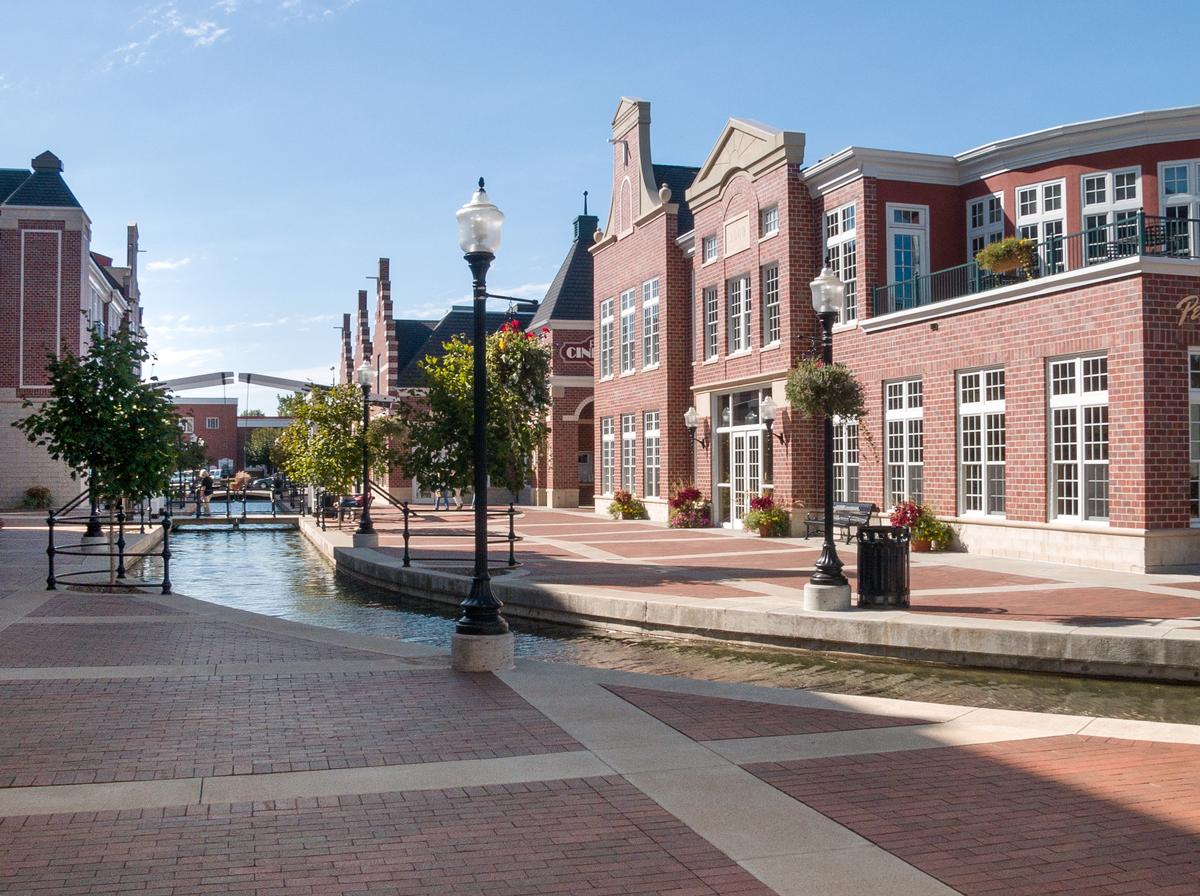
5. Pella, Iowa
When I visited Pella, Iowa, I felt like I had stepped into a small slice of Europe right in the Midwest. Just about 45 minutes southeast of Des Moines, this Dutch-inspired town instantly won me over with its old-world charm and welcoming atmosphere.
We began in the town square, where the Vermeer Windmill rises above red brick streets and tulip beds. I loved exploring the windmill museum and learning how it still grinds grain—it felt like such a unique way to connect history with the present.
Walking around downtown, we found hidden bakeries serving fresh Dutch letters and stroopwafels that quickly became my favorite treats of the trip. Every corner seemed to have a touch of Dutch tradition, from architecture to food, which made the experience joyful and memorable.
One highlight was visiting Scholte House, the former home of Pella’s founder. The historic rooms and gardens transported me back in time, and I couldn’t help but appreciate how much care the community puts into preserving its story.
We also spent time at Lake Red Rock, just a short drive away. With its spectacular views, trails, and water activities, it gave us a peaceful escape into nature after our day in town.
For me, Pella was more than just a stop—it was an affordable, family-friendly getaway filled with culture, history, and outdoor beauty. It’s one of those Midwest gems where every moment feels both relaxing and inspiring.
Check prices at Royal Amsterdam Hotel
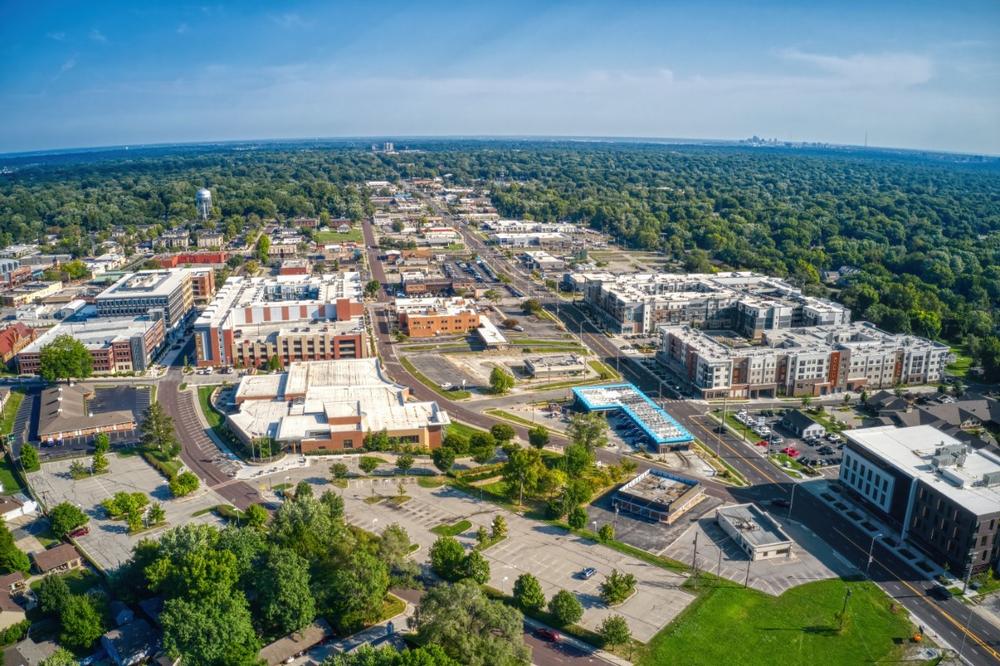
6. Overland Park, Kansas
When I headed to Overland Park, Kansas, I discovered how this Kansas City suburb manages to feel both vibrant and laid-back at the same time. Just 20 minutes from downtown KC, it’s the kind of weekend spot that gives you big-city access while still offering its own personality.
We started at the Overland Park Arboretum & Botanical Gardens, which instantly became one of my favorite places in town. The trails, themed gardens, and peaceful water features created a joyful setting where we could slow down and breathe in the fresh air.
Downtown Overland Park surprised me with its mix of hidden shops, local cafés, and a popular farmers’ market that’s considered one of the best in the Midwest. Sampling homemade jams, fresh produce, and local treats made the morning feel extra special.
In the afternoon, we stopped by the Museum at Prairiefire. Its unusual, colorful glass façade alone was worth the trip, but inside we found exciting rotating exhibits that were both educational and fun. It felt like one of those underrated gems you don’t expect in a suburban getaway.
We also loved how close Overland Park is to the broader Kansas City area. We could spend the day exploring locally, then hop over for barbecue, live jazz, or a game without much effort at all.
For me, Overland Park was a cool mix of culture, nature, and convenience. It’s a spectacular Midwest getaway that combines small-city charm with easy access to big-city energy.
Check prices at Sheraton Overland Park Hotel
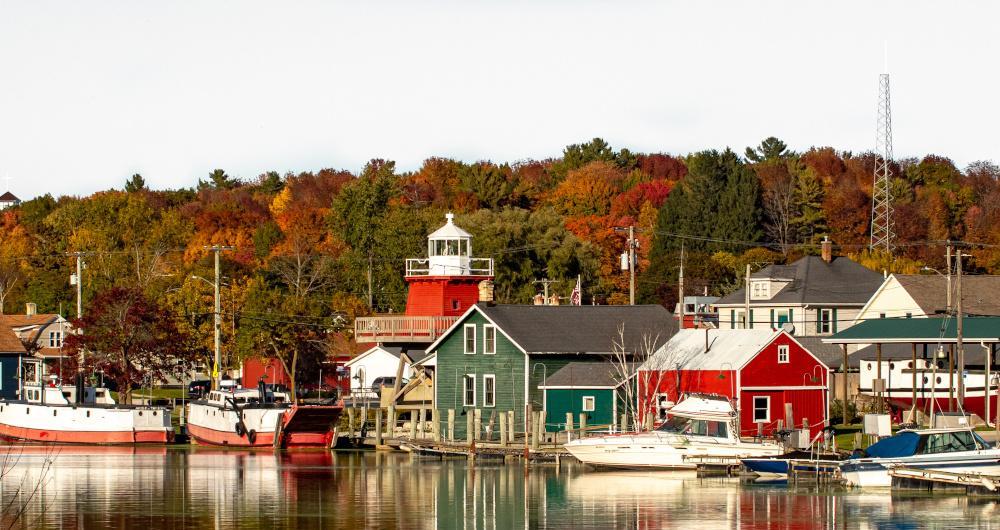
7. Two Rivers, Wisconsin
When I made my way to Two Rivers, Wisconsin, I was struck by how this quiet lakeside town offers such a refreshing escape. Tucked along the shores of Lake Michigan, just north of Manitowoc, it felt like the kind of weekend spot where the water and the pace of life instantly calm you down.
We started at Neshotah Beach, a long stretch of soft sand that’s perfect for swimming, sunbathing, or simply watching the waves roll in. I loved how peaceful it felt, and discovering that this spot is often called a hidden gem along the lake made it even better.
In town, we wandered through the historic downtown, browsing small shops and stopping at cafés. I couldn’t resist visiting the birthplace of the ice cream sundae, which was such a joyful (and delicious) piece of local history to experience firsthand.
One of my favorite parts of the trip was biking along the Rawley Point Trail. The ride took us through lush forests and dunes, all the way toward Point Beach State Forest. The scenery was spectacular and made me feel completely connected to nature.
Later, we spent time at Rogers Street Fishing Village, where maritime history comes alive through exhibits, old fishing shanties, and even a lighthouse. It was an unusual but fascinating glimpse into the town’s deep connection with Lake Michigan.
For me, Two Rivers was an underrated Midwest getaway that combined lakefront beauty, small-town charm, and outdoor adventure. It’s the kind of place where every moment feels simple, joyful, and restorative.
Check prices at Lighthouse Inn on Lake Michigan
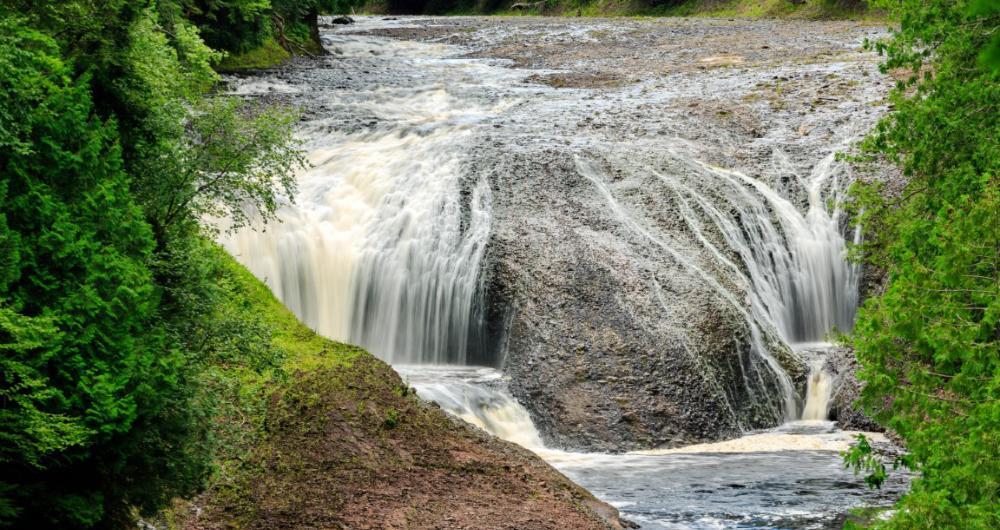
8. Ironwood, Michigan
When I traveled to Ironwood, Michigan, I felt like I had found a corner of the Midwest that still feels wonderfully untouched. Tucked into the Upper Peninsula right along the Wisconsin border, this small town makes for a spectacular getaway filled with nature, history, and outdoor adventure.
We started downtown, where historic red-brick buildings gave the city a nostalgic charm. I loved browsing through local shops and cafés, and the giant Hiawatha statue—one of the most unusual roadside attractions I’ve ever seen—made for a fun photo stop.
From there, we headed out to the trails. Copper Peak was the absolute best highlight of the trip. Standing on the world’s largest ski jump and taking the chairlift to the top gave us breathtaking views over endless forests, Lake Superior, and even glimpses into Wisconsin and Minnesota. It felt like a dream to see the horizon stretch so far.
We also explored nearby waterfalls like Superior Falls and Potato River Falls. Each hike was short but rewarding, and the rushing water set against the thick woods gave us the kind of joyful adventure that makes you feel fully alive in the outdoors.
Later, we spent an afternoon at the Ironwood Theatre, a beautifully restored gem that still hosts concerts and performances. The mix of culture and small-town warmth made the experience even more special.
For me, Ironwood was an underrated Midwest getaway—affordable, adventurous, and surrounded by natural beauty. It’s the kind of place where every moment feels both peaceful and exciting.
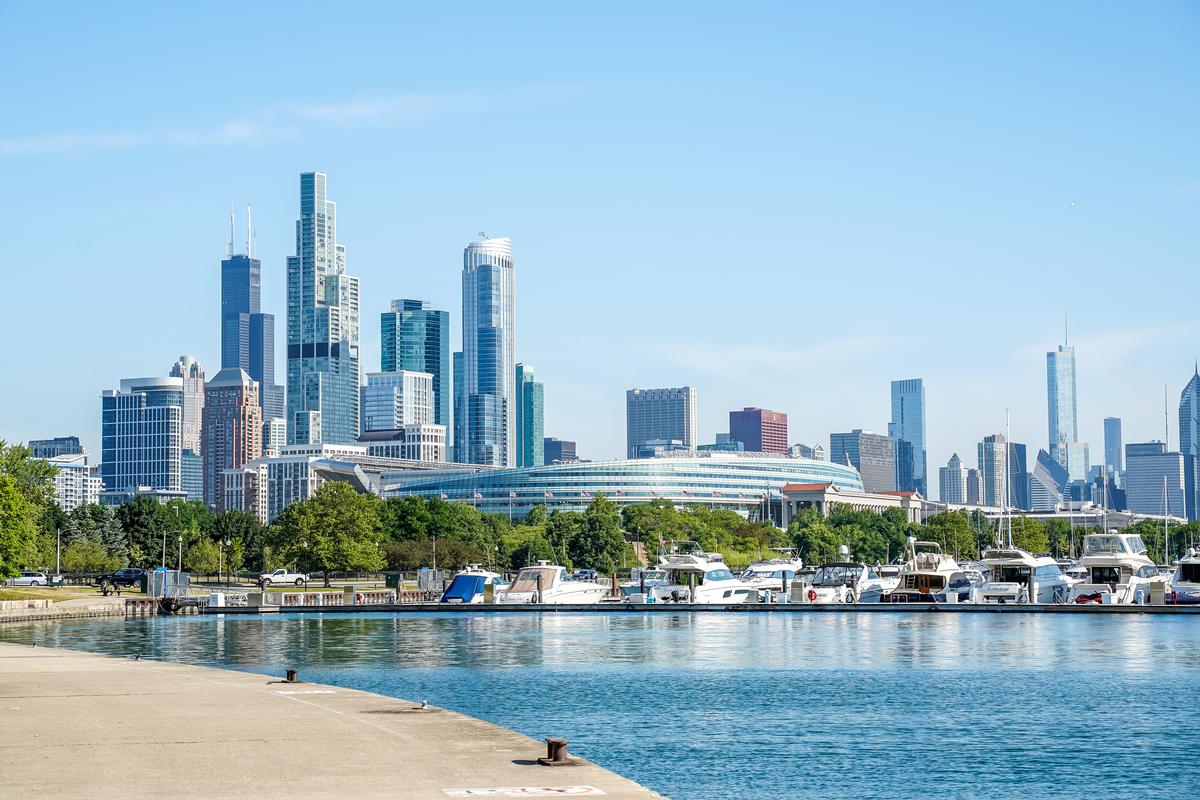
9. Chicago, Illinois
When I planned a weekend in Chicago, Illinois, I knew I’d find the big-city buzz, but I didn’t expect to uncover so many cool local spots that made the trip unforgettable. Just arriving downtown and seeing the skyline rise over Lake Michigan gave me that instant weekend getaway thrill.
We kicked things off at Dreambox Gallery in Wicker Park, a hidden gem that combines art, creativity, and community in such a unique way. I loved wandering through the exhibits, which felt intimate and thoughtful, and it gave us a fresh perspective on the city’s thriving art scene.
Later, we headed into the Loop and made our way to Monk’s Pub, which quickly became one of my favorite stops. With its cozy, old-world vibe, dark wood walls, and endless beer selection, it felt like the absolute best place to settle in after a long day of exploring. I actually went back twice because the atmosphere was so joyful and welcoming.
Of course, we couldn’t skip Chicago’s classic attractions—strolling Millennium Park, taking in the spectacular view from the Skydeck, and enjoying the lakefront trail. Each moment reminded me why Chicago is such an exciting city to visit.
Check prices at Palmer House Hilton
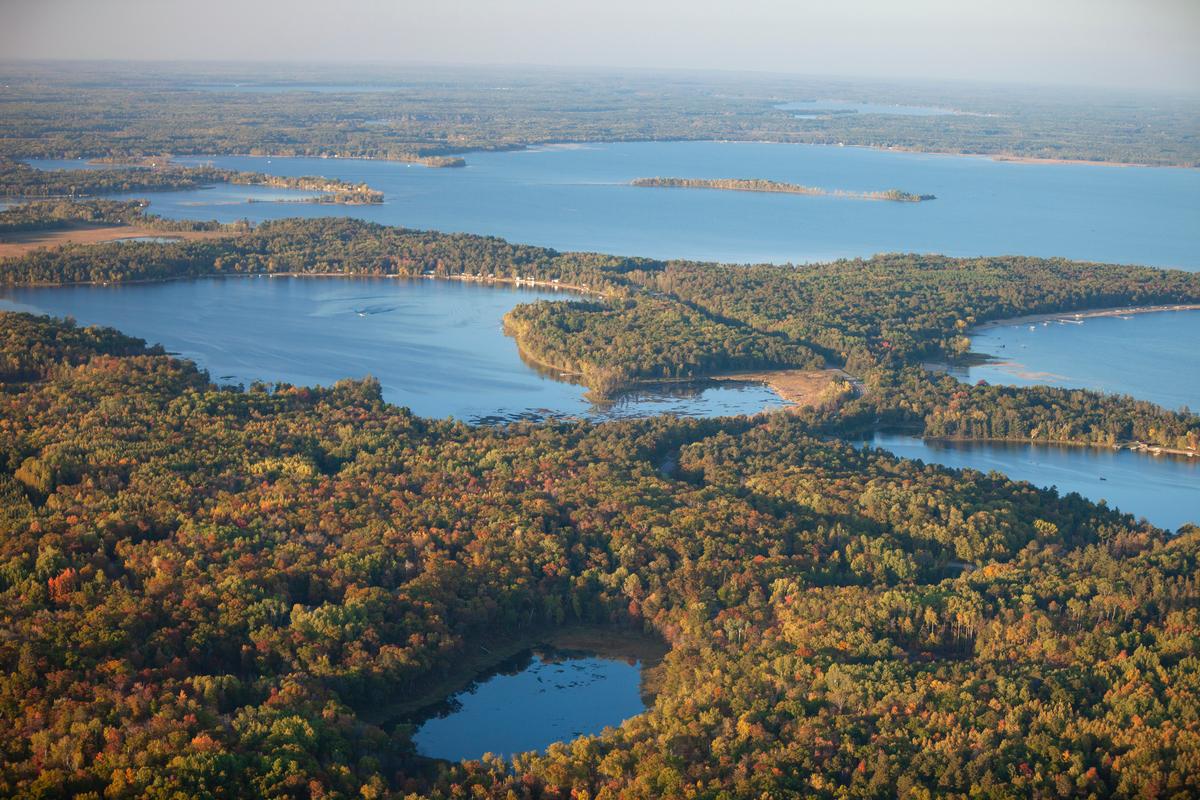
10. Brainerd, Minnesota
When I headed up to Brainerd, Minnesota, I felt like I was stepping into the heart of lake country. About two hours from the Twin Cities, it’s the kind of Midwest getaway where the pine forests, winding trails, and sparkling lakes make you slow down and just breathe.
We started our trip on the water, since Brainerd is surrounded by some of the most beautiful lakes in the state. I loved renting a boat and spending the afternoon fishing, swimming, and just soaking in the calm—it felt like the absolute best way to kick off a summer escape.
In town, we found hidden spots full of small-town charm. Local diners served hearty breakfasts, and unique boutiques made for fun browsing. The sense of community was joyful, and it made the whole trip feel warm and welcoming.
One of my favorite highlights was biking along the Paul Bunyan State Trail. The trail winds through forests, lakeshores, and open countryside, and it felt spectacular to ride for miles with nothing but fresh air and wide skies around us.
We also made sure to check out family-friendly attractions like the Northland Arboretum and the classic Paul Bunyan Land theme park. They added that touch of playful magic that made the trip even more memorable.
For me, Brainerd offered the perfect balance of adventure and relaxation. It’s an underrated Minnesota gem where every moment by the water, on the trail, or in town felt like a refreshing reminder of what a true Midwest getaway should be.
Wrap-Up: Weekend Wonders Worth Repeating
Looking back at all these Midwest getaways—from the waterparks of the Dells to the lake views in Two Rivers, the Dutch charm of Pella, and the trails around Brainerd—I realized how much variety this region has to offer. Each town brought its own hidden gem moments, whether it was a cozy café, a spectacular hike, or an unusual roadside attraction that made me smile.
What I loved most was how every destination felt both joyful and restorative in its own way. Some weekends were about exciting city energy, like in Chicago or Lincoln, while others leaned into peaceful nature escapes, like Ironwood or Cedar Falls. The balance of culture, history, and outdoor beauty gave me the chance to see the Midwest not just as a place to pass through, but as a dream-worthy collection of adventures.
For me, these trips proved that the Midwest holds more than meets the eye. It’s affordable, welcoming, and full of surprises—an underrated part of the country where every weekend getaway feels special, memorable, and worth savoring.
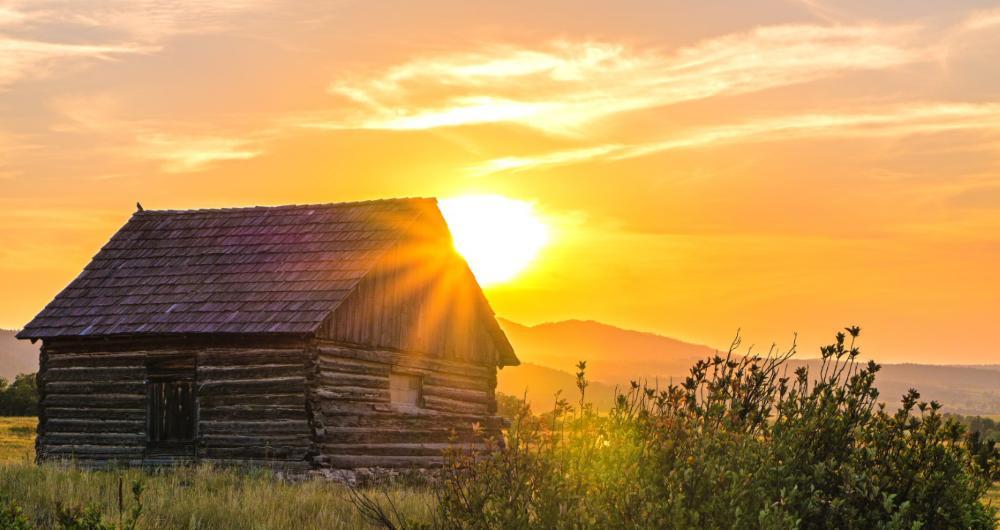
11. Spearfish, South Dakota
When I needed a break from the noise and wanted a slower, nature-filled kind of getaway, I headed to Spearfish, South Dakotawaterfalls, hiking trails, and small-town charm. I spent mornings walking along Spearfish Creek, watching trout flash through the water, and afternoons winding down at a local café with a warm drink and zero rush to be anywhere else. The scenic drives were stunning—especially through Spearfish Canyon, where every curve brought a new view. What I loved most was the pace. It let me exhale, reset, and actually enjoy the moment. Whether you're hiking through golden fall leaves or catching snowflakes in winter, this town has a quiet magic that stays with you long after you’ve left.
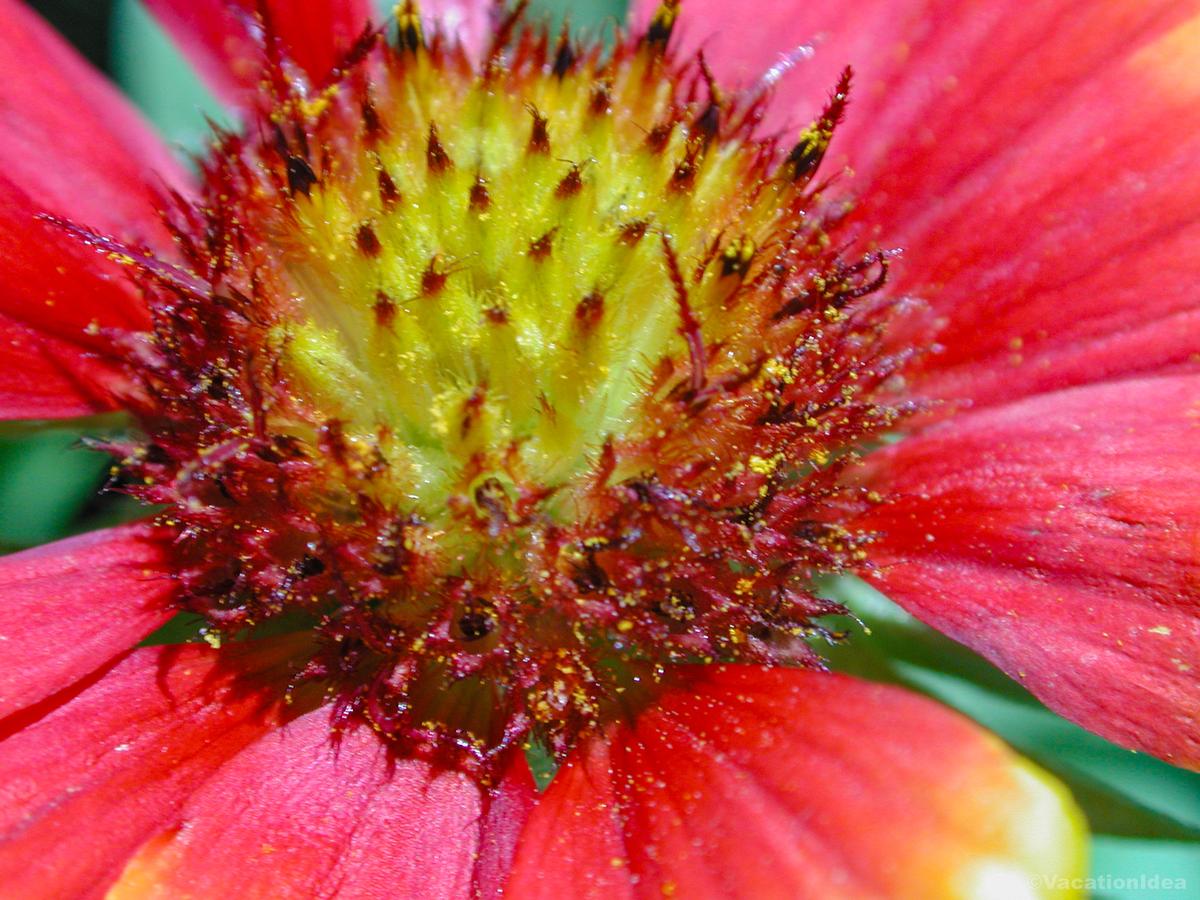
Booking Checklist
1. Book Your Flight - I use Expedia because I like their mobile app with my itinerary. They've helped me re-book flights on many occasions. Once you reach their Gold tier, support is especially good.
2. Book Your Hotel - I use Booking.com or Expedia, depending on my destination.
3. Book Your Rental Car - I use Expedia.
4. Book your tours on Viator or Get Your Guide.
5. If you are planning to visit more than three national parks in the next 12 months, buy the America the Beautiful Pass.
